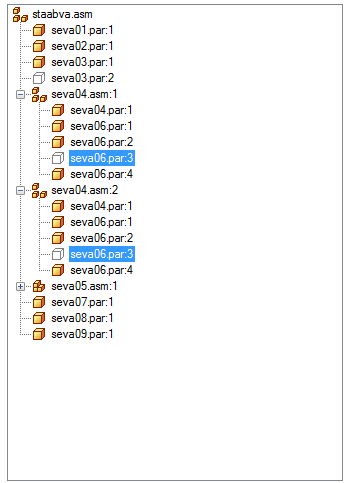Exclude parts from an exploded parts list
Include and exclude is based on occurrence and direct ownership. For example, excluding one occurrence automatically excludes the same occurrence in the same ownership structure within the overall assembly. It also changes the quantity of that part wherever it occurs within the structure.
-
Do either of the following to open the Parts List Properties dialog box:
-
Right-click the table on the sheet and choose Properties.
-
Edit the table directly:
-
Double-click the parts list to display the edit frame.
-
Right-click the button in the top-left corner of the edit frame, and choose Properties

-
-
-
In the Parts List Properties dialog box, click the List Control tab.
-
On the List Control tab, do the following:
-
In the Global section, click Exploded list (all parts and subassemblies).
-
Expand the parts list structure until you locate the first occurrence of the item that you want to exclude, and then select it.
Example:Selecting the first occurrence of seva06.par:3 in subassembly seva04.asm:1 selects two instances of the part within the top level assembly, staabva.asm.

-
In the Selected item section, click Exclude.
-
If you selected a part, it is shown in the inactive color in the parts list pane.
-
If you selected a subassembly, then the subassembly tree also is collapsed and shown as inactive.
-
-
-
You also can right-click an item in the parts list to access the shortcut menu:
-
Include
-
Exclude
-
Include Assembly
-
Include Component
-
-
For each subassembly that is included rather than excluded, you can use the options in the Subassemblies section to specify how you want to count it in the parts list.
-
Include assembly as single item—This specifies that the subassembly is counted as one unit in the parts list.
-
Include assembly components—This specifies that the individual components in the selected subassembly are listed and counted in the parts list.
-
© 2021 UDS